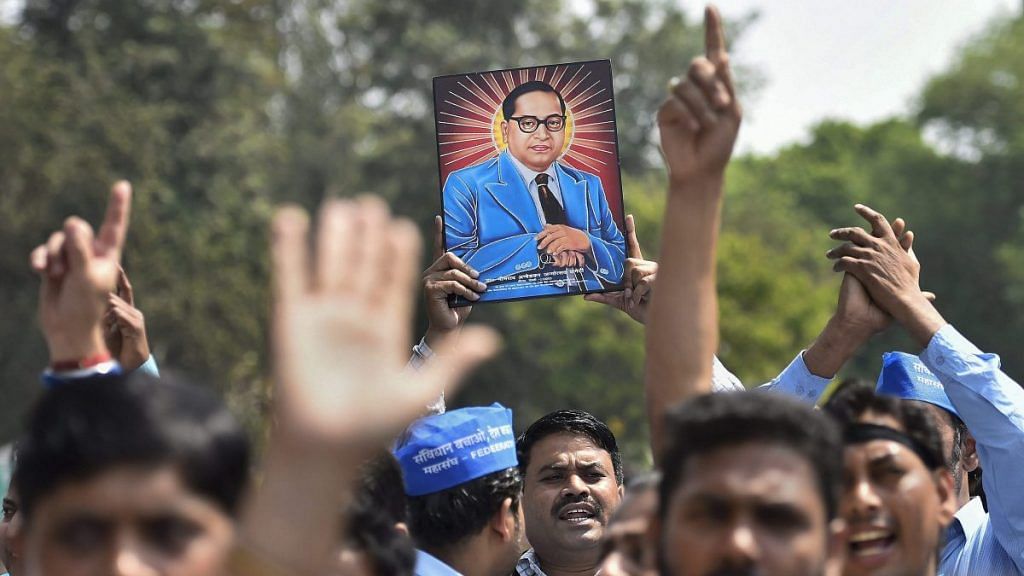The Covid-19 affected world is undergoing what can be called a “colour revolution”. The Black Lives Matter movement, which reached a new level after the brutal murder of 46-year-old African-American George Floyd by a White police officer, Derek Chauvin, is shaping this revolution. Blacks across the world are joined by Asians and White democrats and, in the process of rewriting history, are bringing down statues of slave traders and racist people eulogised by the colonialists.
Today’s India is yet to see a full-fledged movement against caste on the scale of Black Lives Matter, even though both racial and caste discrimination have a common aspect linking their past, present and perhaps future too — the notion of inferior and superior.
Similar to how the Whites subjugated Blacks based on notions of superiority for free or cheap labour, the so-called upper castes in India exploited the Shudras and Dalits by holding themselves as superior to achieve and sustain dominance in the hierarchical construct of the Hindu society.
Moreover, just like the current generation of White Americans and Europeans are not responsible for slave trade and colonialism but reaping their benefits, the ‘twice-born’ (dwijas), particularly the Brahmins in India, hugely benefitted from their ancestors’ oppression of the Shudras and Dalits. Now, as the ‘colour revolution’ begins attacking all symbols of exploitation, India needs a revolution against caste too.
Also read: Bristol brought down slave trader’s statue. This is what India should do with Manu statue
Down with racist, casteist statues
The lives of slave traders and historical figures such as Christopher Columbus, Vasco Da Gama — all those popularised for their geographical discoveries but in effect paved the way for White colonialism — are being re-examined. Not only are their statues and busts being taken down but suggestions are being made to create museums that depict human exploitation, oppression and violence, and put them there. Future generations must know that they have caused human pain, suffering and loss of life.
In India, too, there is some awakening now about the historically eulogised casteist figure, Manu, whose statue stands on the premises of the Rajasthan High Court in Jaipur. In December 2018, two Dalit women, Kantabai Ahire and Sheela Pawar, had blackened Manu’s statue, for which they were arrested. They are out on bail but the case against them is still on.
But it is through Manu’s statue that an anti-caste revolution can be initiated in India. A national-level peaceful movement is the need of the hour, and it must take inspiration from the ‘colour revolution’ to change caste relations and recognise Manu as the central villain.
Also read: Why Jyotiba Phule would have cheered White Americans out on street over George Floyd murder
Casteist Manu
Manu is anyway the most prolific symbol of India’s caste system because he wrote what is known as Manusmriti.
A glimpse into some of his casteist views about Shudras, Dalits, and women reveals a character who is just inhuman.
But a Shudra, whether bought or unbought, he may compel to do servile work; for he was created by the Self-existent (Svayambhu) to be the slave of a Brahmana. [v.8.413.]
A once-born man (a Shudra), who insults a twice-born man with gross invective, shall have his tongue cut out; for he is of low origin. [v.8.270.]
By approaching Chandalas, one becomes degraded [22.4.3.4.3]
A Brahmana who unintentionally approaches a woman of the Chandala or of (any other) very low caste, who eats (the food of such persons) and accepts (presents from them) becomes an outcast; but (if he does it) intentionally, he becomes their equal. [v.11.176.]
By a girl, by a young woman, or even by an aged one, nothing must be done independently, even in her own house. [v.5.147.]
B.R Ambedkar had burnt Manu’s book as a protest during the freedom struggle. But instead of publicly kneeling down before a statue of Ambedkar and repent for centuries of caste oppression and untouchability — practices that continue to this day — the dwijas installed a statue of the purveyor of segregation, in a court complex of all places.
Also read: Annihilation of caste in Indian corporate possible. But firms must say Dalit lives matter
The anti-caste movement
Manu and his believers give Shudras, Dalits and women a slavish position and this understanding spreads caste hierarchies, women’s inequality and societal oppression. The Gujjars of Rajasthan, Jats of Uttar Pradesh and Haryana, Patels of Gujarat, Marathas of Maharashtra, and Yadavs constitute Shudra agriculturists. All of them need to think about the presence of Manu’s statues in a constitutional democracy like ours.
In Manu’s worldview, agricultural production — in fact, the very philosophy of production — has a negative place, which transcends to common Indian lives, too. Agrarian development in India is stagnated because of this so-called ‘polluted’ status because of its association with the Shudras. The systemic indifference to labour — both in villages and through migrants in cities, as witnessed during the Covid-19 lockdown — is because of this anti-production mindset that Manu has given to Indians.
Dividing the society into dwija and non-dwija and touchable and untouchable played a destructive role. It is time to change these caste-based social divisions. Removal of Manu’s statue from the Rajasthan High Court complex and placing it in a museum of the caste system of India will elevate India’s stature as a republican democracy.
Let us come clean from our unequal past and move towards total equality.
Kancha Ilaiah Shepherd is a political theorist, social activist and author. Views are personal.
